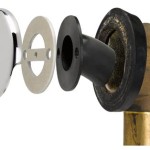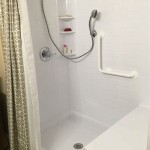Parts of a Bathtub
The modern bathtub has undergone significant evolution since its humble beginnings, incorporating various elements that enhance its functionality and aesthetic appeal. Understanding the different parts of a bathtub provides valuable insights into its design and maintenance.
1. Bathtub Bowl
The bathtub bowl is the primary component that holds water and accommodates the bather. It comes in diverse shapes and sizes, ranging from classic rectangular forms to ergonomic designs that maximize comfort. The material used for the bowl can be acrylic, fiberglass, cast iron, or porcelain, each with its unique characteristics and durability.
2. Overflow Drain
Located near the rim of the bathtub, the overflow drain prevents spillage by channeling excess water into the drainpipe when the water level rises too high. This safety feature ensures that the water does not overflow and cause potential water damage.
3. Drain Assembly
The drain assembly consists of a drain stopper and a drainpipe. The drain stopper plugs the drain opening to retain water in the bathtub and can be lifted to allow for drainage. The drainpipe connects the bathtub to the plumbing system, carrying away wastewater.
4. Faucets
Faucets are essential for controlling the flow and temperature of water entering the bathtub. They can be mounted on the bathtub rim, the wall behind the bathtub, or a countertop vanity. Faucets come in various designs and styles, including single-handle, double-handle, and waterfall faucets.
5. Bathtub Surround
The bathtub surround frames and protects the bathtub from water damage and mold growth. It can be made of various materials, including tile, fiberglass, or acrylic panels. Some surrounds incorporate shelves and niches for added convenience and storage.
6. Grab Bars
For safety and accessibility, grab bars can be installed on the bathtub wall or surround. They provide additional support for entering, exiting, and maintaining balance in the bathtub, especially for individuals with mobility limitations.
7. Skirting or Apron
A bathtub skirting or apron conceals the space between the bathtub and the floor, providing a finished and aesthetically pleasing appearance. It can be made of the same material as the bathtub or a contrasting material for a unique design element.
8. Bathtub Feet or Legs
Bathtub feet or legs elevate the bathtub from the floor, allowing for easier cleaning and creating a classic or vintage aesthetic. They can be made of metal, acrylic, or other durable materials and can vary in size and shape.
9. Showerhead and Arm
For bathtubs with integrated showers, a showerhead and arm are essential components. The showerhead dispenses water from the plumbing system, and the arm supports and positions the showerhead over the bathtub. Showerheads come in various shapes and spray patterns to cater to different preferences.
10. Control Panel (Optional)
Some modern bathtubs incorporate a control panel that allows for additional functionality, such as adjusting water temperature, selecting different spray patterns, or activating whirlpool or air jets. The control panel provides convenient control over the bathtub's features.

Bathtub Parts Everyone Should Know About Part Names 2024

Parts Of A Bathtub With Diagram Homenish Plumbing Sizes Drain

Choosing A Bathtub Everything You Need To Know Rona

Ultimate Guide On Parts Of A Bathtub Names Functions Diagram

How A Bathtub Works Plumber Explains

The Anatomy Of A Bathtub And How To Install Replacement Diy Home Remodeling Bathroom Design
Oceania Baths Inf148m At Splashworks The South Bay S Premiere Showroom For Plumbing Fixtures San Jose

7 Bathtub Plumbing Installation Drain Diagrams

Bathtub Parts Everyone Should Know About Part Names 2024

How A Bathtub Works Types Plumbing Diagrams Hometips








